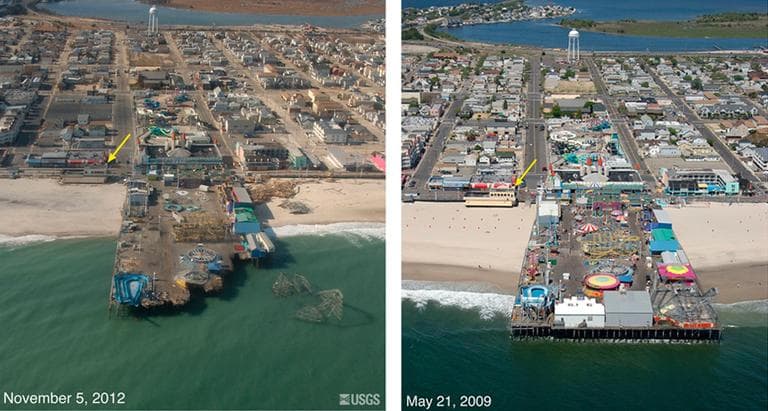Advertisement
Protecting Coastal Communities After Sandy

Two weeks after Sandy, the reality is setting in that tens of thousands of homes and apartments in New York and New Jersey will not have power for weeks, maybe months, until they are repaired.
Money for shelters has become an urgent issue for officials and New York Governor Andrew Cuomo is requesting 30 billion dollars in federal disaster aid to cover losses - as frustration and anger mount over the slow pace of recovery in the hardest hit areas.
...efforts to protect coastlines from Mother Nature have always been controversial, and in the wake of Sandy, will become more so.
In New Jersey, barrier island residents were allowed back for the first time since the storm - for a few hours - to see what was left of their homes and shops, if anything. One business owner in Seaside Heights called Sandy "a nightmare that doesn't want to end."
Meanwhile, some housing projects in the Rockaways got power back, the Long Island railroad returned to nearly normal service and New Jersey announced an end to gas rationing. And in towns along the coast, cleanup continues, including pushing sand back towards the ocean in an attempt to restore a beach washed away by Sandy.
The storm pushed megatons of sand into homes, businesses and streets along barrier islands - and in some cases, across the islands and into the bays behind them. New Jersey Governor Chris Christie has pledged that all that sand and everything that sits on it will be put back.
But with sea levels rising and the threat of more super-storms, is that the right move?
Cornelia Dean, a science writer for The New York Times and author of the book "Against the Tide: The Battle For America's Beaches" says efforts to protect coastlines from Mother Nature have always been controversial, and in the wake of Sandy, will become more so.
Guest:
- Cornelia Dean, science writer for The New York Times and author of "Against the Tide."
This segment aired on November 13, 2012.